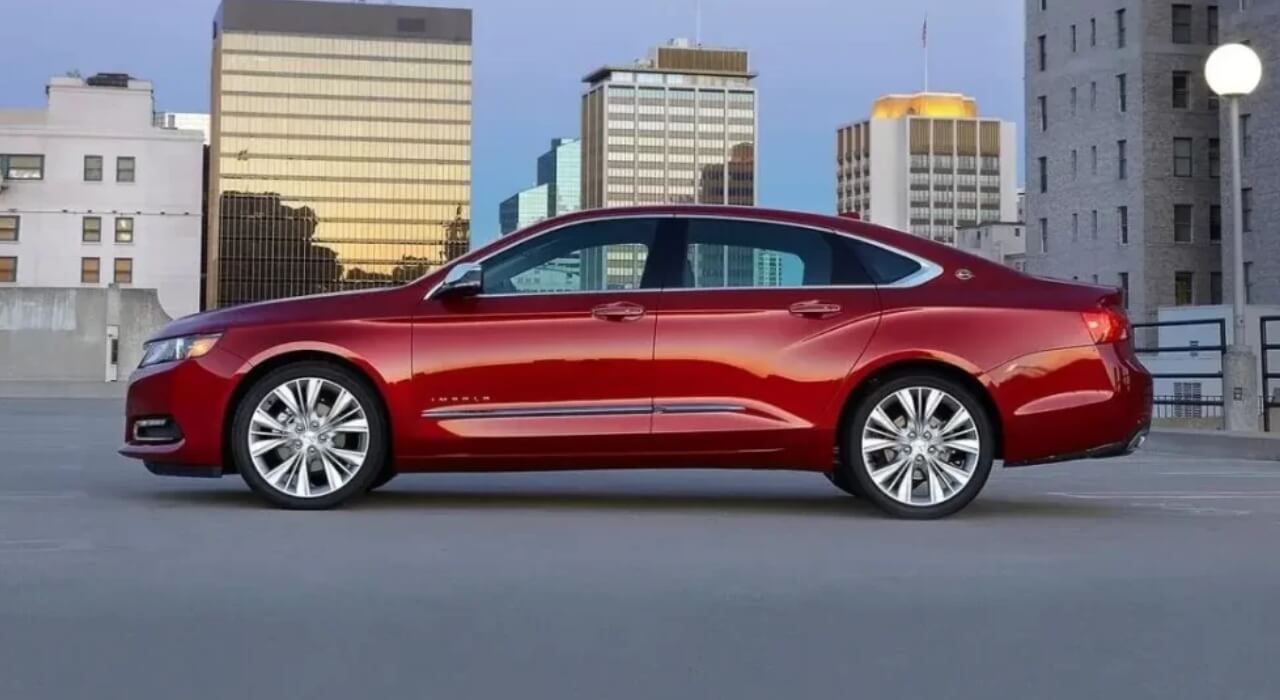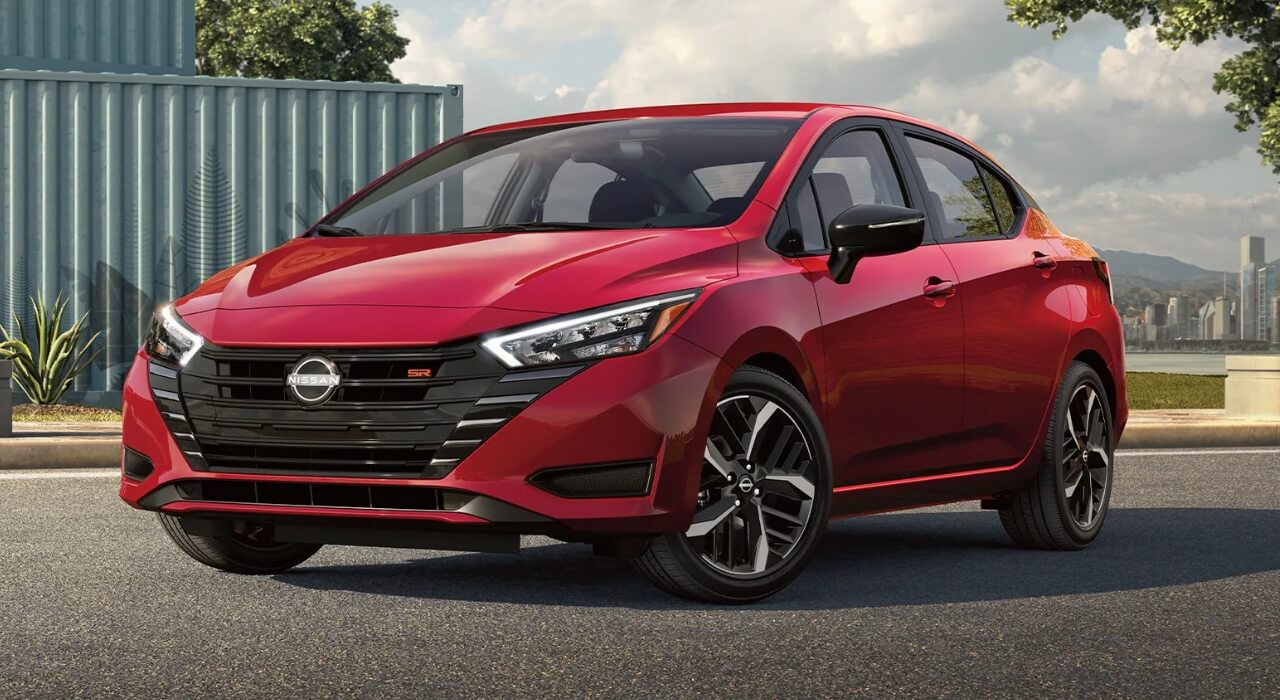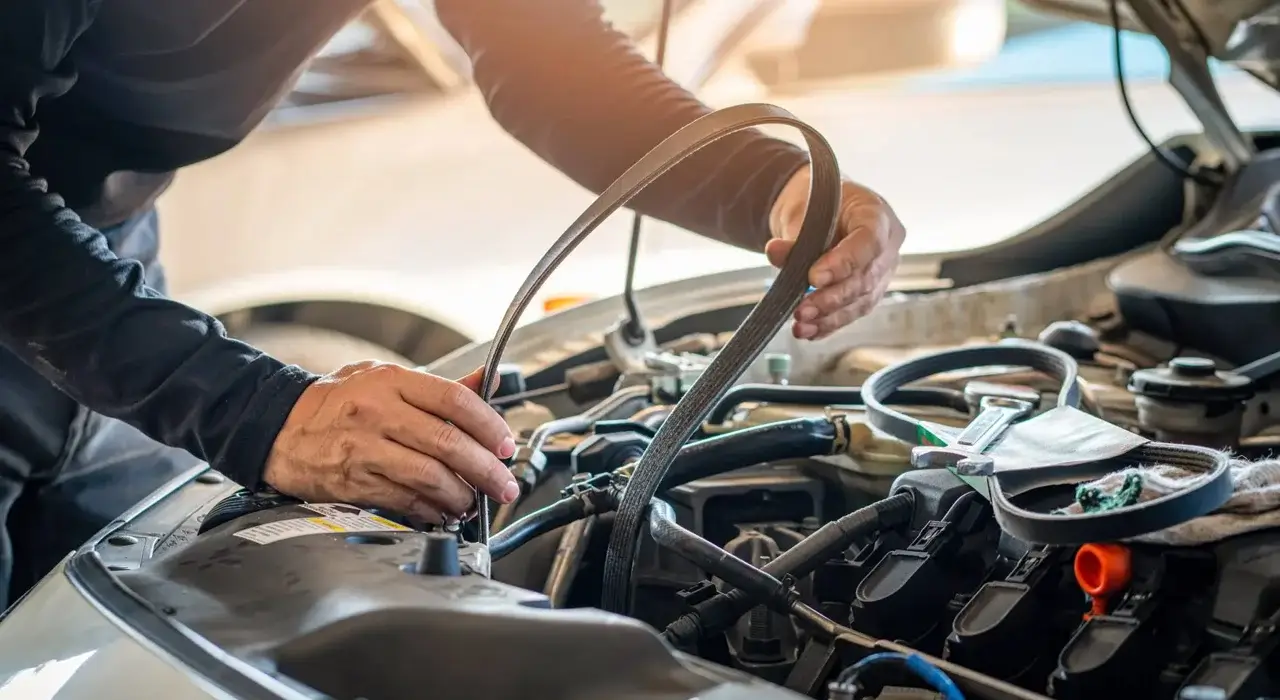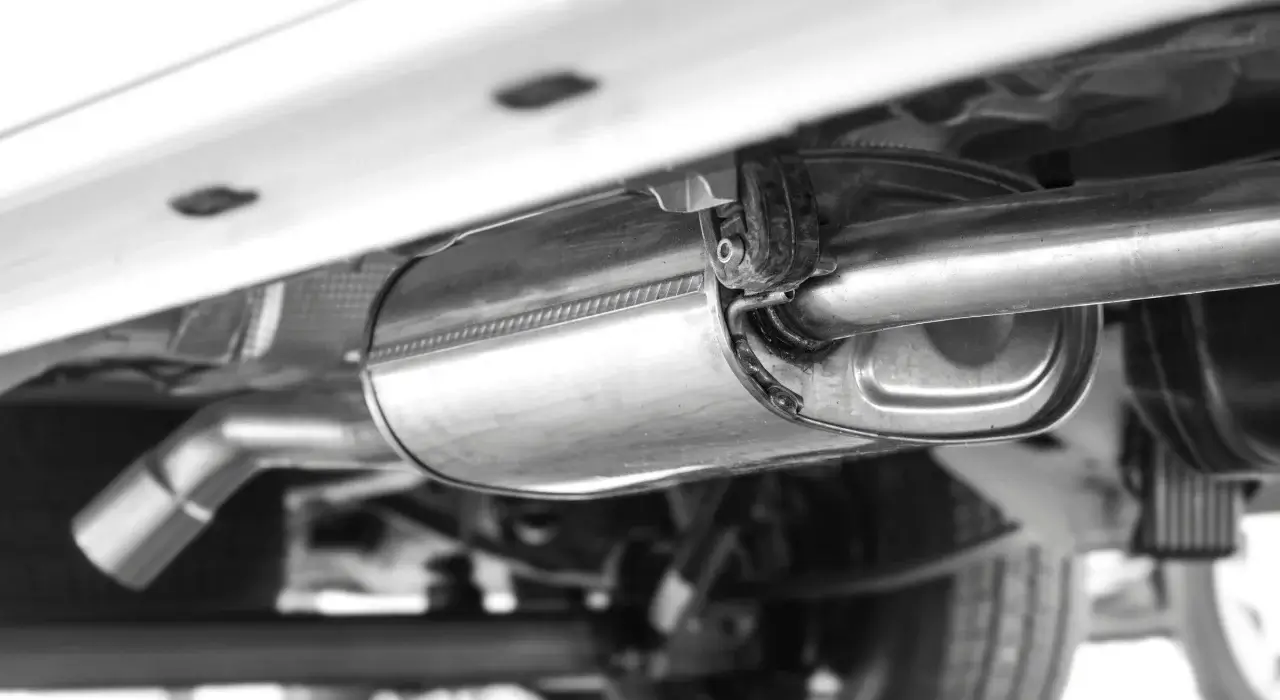The timing belt is an essential yet vital component contributing to a car’s motion. So, what happens when the timing belt breaks while driving slowly? You’ll have the worst day if your timing belt breaks while driving.
It will never be good to hear the phrase “broken,” so beware. The timing belt operates similarly. Your engine will splutter so much without the timing belt that you won’t be able to drive. Your engine is currently dead, to put it simply.
It is typical to have this catastrophe, especially with older vehicles. A timing belt has a life cycle much like anything else. It is not feasible to awaken to a broken timing belt because this issue is unlikely to occur in a parked car.
If this ever happens to you, your timing belt breaks while driving slowly. In the same way that every other issue has a solution, so does this one. To understand how to fix a broken timing belt, you must first be aware of a few essential details.
What is a Timing Belt?
The timing belt is one of the most straightforward components of an engine. It plays a crucial role in how well your engine works. Whenever you talk about engines, the terms “timing belt” or “cam belt” are sure to come up & also what happens when the timing belt breaks while driving?
To begin with, the timing belt and cam belt are interchangeable. A timing belt may be unknown to you if you do not know how a car engine operates. Let’s address the query, “What is a timing belt?”
A timing belt is a reinforced rubber belt with a specific purpose inside the car engine. This ensures that the crankshaft and camshaft rotate at the same rate. It ensures that the crankshaft and camshaft move at the right time to open and close the valves.
Suggestion: Top Reasons Why & How Do They Get Cars In The Mall.
The timing belt has several serrations that resemble teeth. This enables a secure connection to be made between the crankshaft and camshaft. Typically, nylon strands are incorporated into rubber to create reinforcement.
One of the most potent synthetic materials is nylon, which has an overlapping fiber structure. As a whole, rubber and its silk-like polymer reinforce the timing belt’s durability.
How Does The Timing Belt Work?
So, now that you are aware of what a timing belt is, you will begin to doubt its significance. We must examine how this timing belt works to comprehend why it is crucial.
The camshaft is in charge of managing the valves that will let fuel and air into the engine. The crankshaft will drive your pistons up and down inside of their cylinders in the interim. When the piston compresses, the air and fuel mixtures must be within the cylinder.
When the piston compresses, the air and fuel combination enters the cylinder. Camshafts and crankshafts cannot manage their individual duties’ durations. The injection timing must be precise so that the piston compresses and the fuel ignites immediately.
The timing belt is helpful in this situation. The camshaft and crankshaft are connected to the timing belt, which keeps the action of both moving in unison for precise timing. Therefore, a question arises: what happens when the timing belt breaks? The fuel won’t follow when the piston moves, and vice versa. Your engine may misfire or briefly lose power, and eventually, you risk having an engine that seizes up.
Related Post: Consider These Subaru Forester’s Engine Problems Before Buying.
Timing belt damage or movement can result in severe engine damage. Engine failure will occur immediately due to improper camshaft and crankshaft operation.
5 Signs That Your Timing Belt Is In Bad Shape
As already mentioned, a timing belt failure might be disastrous. There are various indicators you can notice to prevent engine damage or to spare yourself from admitting “My timing belt broke while driving.” You can have it replaced by anticipating when your timing belt will fail.
You should consult your manufacturer’s tips before considering these timing belt failure warning indicators. Most vehicles would require a new timing belt between 60,000 and 90,000 miles.
Timing belts are not guaranteed to last this long; these figures are only suggestions. It may occasionally last longer than the time frame given. It is wise that you know what happens when the timing belt breaks & the signs of a damaged timing belt.
1. Engine Noise
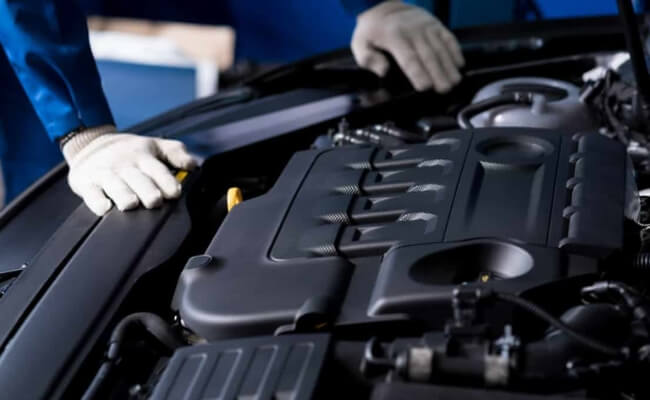
Engine noises are a prevalent problem in this situation, as in many others. Your engine making noise at random is never a good sign. Identifying unusual noises should be easy since you know the sound your car makes when it’s operating well.
A set of pulleys connects your timing belt to the engine. There will be a noticeable ticking sound when the timing belt breaks. Using this distinctive sound, you could identify the issue with your car’s timing belt.
Have You Read This? Which Cars Are Most Targeted For Catalytic Converter Theft?
Although it is frequently heard because of the timing belt, this noise is not inherent. This is neither fast nor repetitive, like the ticking sound. When you try to accelerate or apply the brakes, you will be able to hear this.
2. Unable To Start Engine
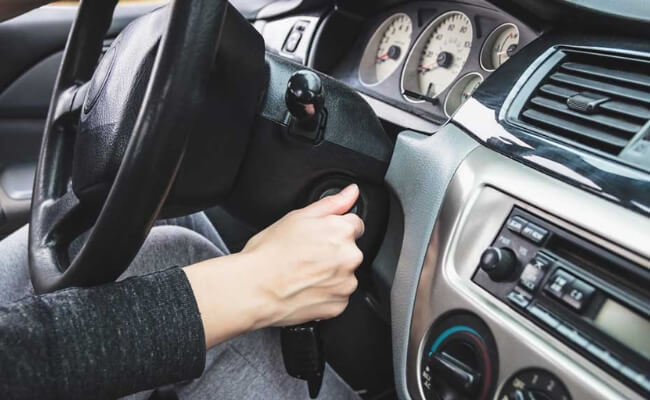
In some instances, you won’t be able to start your engine with a worn timing belt. When the timing belt wears down what happens is that the pulleys can no longer work because of insufficient grip. It may start when you turn the key, but the timing belt drives the crank and camshaft, so it does not run.
Although it is uncommon, timing belt breaks when starting an engine are less often than when driving. Your engine might start with a worn timing belt after a few tries, but the chances are not in your favor.
3. Engine Misfires

Misfiring engines are another typical symptom of a malfunctioning timing belt. The timing belt controls the timing of the crankshaft and camshaft. Therefore, a bad timing belt will cause the timing to be off, leading to engine misfires.
When your timing belt wears out, this happens. When your timing belt is worn out, it can no longer keep up with the crankshaft and camshaft. Injection of fuel-air combination will occur before the pistons are ready if the valves open and close incorrectly.
The engine will misfire once this takes place during those strokes. Continuous engine misfires will harm other engine parts and lead to many more issues.
4. Motor Oil Leak
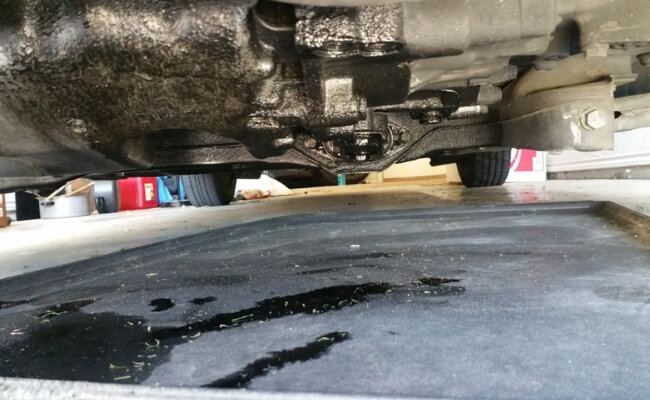
You’ll see that the timing belt cover is where the engine’s oil leak is coming from. With the help of numerous nuts and bolts, the cover is secured. It is usual for these nuts and bolts to loosen with time.
Oil leaks also occur when the gasket between the engine block and the timing cover wears out. A damaged gasket or an improperly installed gasket can also cause similar leaks.
There are two possible outcomes if the timing belt cover develops an oil leak. Your engine will overheat. Second, the oil may interfere with the timing belt’s friction, reducing the amount of grip it receives. Engine misfires is what happens when the timing belt breaks.
Also Check:
Breaking off a timing belt tooth and lodging in the oil pan just below the belt can also cause oil leaks. Oil cannot circulate adequately after this occurs. This will cause the oil to pressurize in that region, which will cause a leak once more.
5. Rough Idling
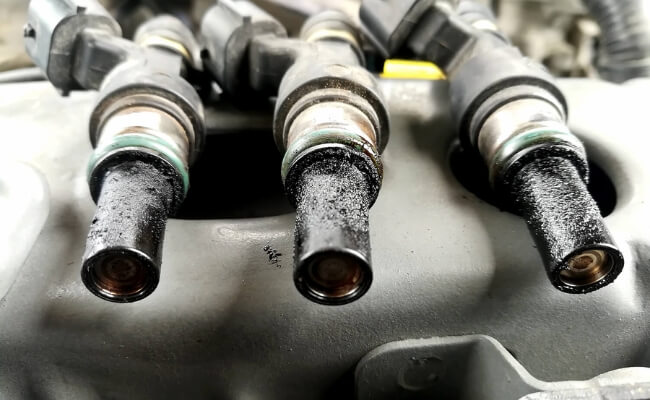
There could be several issues if your engine is idling poorly. An unreliable timing belt may be to blame. When your engine isn’t working, your car shouldn’t be rough.
However, loud vibrations or rumbling could indicate that your engine is in trouble. You should check the engine as soon as possible if it vibrates after you turn the key.
Frequently, these issues go unreported, or the timing belt is never held responsible. This frequently led to your timing belt breaking while you were driving. You should study the manual even if your timing belt appears to be working well.
Prevention is preferable to treatment. Eventually, your current timing belt would need to be replaced with a new one. Getting your vehicle changed when it is in working order is preferable to waiting until it is too late.
The Best Timing Belt With Water Pump
- Brand: Nakuuly
- Weight: 5.9 Pounds
- Dimensions: 10.43 x 7.4 x 6.3 Inches
- Connects Camshaft & Crankshaft
- Enhances Fuel Efficiency
- Stable Operation
The BaoSJ Timing Belt is compatible with water pumps. It consists of high-quality rubber and has a long service life. Such characteristics make it one of the finest timing bests available.
You can use it for both the inlet and outlet of the pump, which makes it more convenient for installation. The belt has a long service life and can be used for many years without any problems.
5 Reasons Why Timing Belt Breaks While Driving
You would undoubtedly wonder why the timing belt broke if it did so while you were driving. It just snapped in half, although you did nothing wrong. Why do timing belts fail? Let’s examine.
We’ve compiled a list of issues and potential causes to assist you in determining. Check your timing belt drives visually for the top 6 failure-causing issues. Avoiding unplanned downtime may assist in keeping your drives from grinding to a halt.
1. Misalignment
Misalignment is what happens when timing belt breaks fail. Misalignment can cause excessive or uneven tooth wear, belt tracking, and tensile failure.
Don’t Miss To Checkout: 7 Most Comfortable Car Seats For Long Trips – Full Review To Buy Online.
You can extend the life of your timing belts and reduce downtime by inspecting and straightening your shafts and timing pulleys.
2. Excessive Load
Excessive load is almost certainly the root of the problem if the timing belt teeth are shearing. Excessive or shock loads can also lead to timing belt failure while driving slowly and even excessive tooth wear, though the latter is less frequent. You’ll need to redesign the drive to fix this issue.
3. Age & Miles
Rubber is used to make the timing belt, as was previously explained. Nylon is used to reinforce it, but that does not make it indestructible. It has teeth on one side to keep it attached to the pulleys and connect it to the camshaft and crankshaft.
Wear is unavoidable when combined with the engine’s heat and friction over time and distance traveled. When the timing belt breaks what happens is that the rubber teeth lose their ability to hold the pulleys.
This frequently leads to sliding and could harm the engine. Stress fractures may result from the constant stress placed on the timing belt. Over time, these stress fractures worsen to the point that they can break in two with a single hard pull.
4. Debris In The Pulleys
Debris is the most commonly disregarded source of issues for your timing belt and pulley. The materials of the belt might be harmed by oil and abraded by dirt on the teeth. You can remove dust and rust by using a stiff brush.
Eliminate grease and oil by wiping. Debris can attribute any of the causes above to timing belt failure while driving. So go clean those pulleys and install a shield on that drive!
5. Water Pump Seizure
This is one of the problems that happens when the timing belt snapped while driving. What connection exists between the timing belt and the water pump, then? Nothing precisely; they have no connection to anything when the engine runs.
Water pumps pass through the timing belt since it is situated along its route. As a result, a malfunctioning water pump is likely to affect the timing belt.
Also Check:
The issue arises as soon as the water pump seizes. When the gears abruptly stop spinning, the timing belt will almost always be broken. It could be the outcome of a variety of issues. The most typical case is when pumps go dry.
Replacement Cost Of A Timing Belt
Timing belt replacement is never going to be inexpensive. It depends on various elements, including labor expenses and the type of vehicle you drive. The price range is frequently $500 to $2000. However, the total might quickly reach several thousand dollars.
The cost will often vary depending on the vehicle you drive. The replacement cost will depend on your car’s popularity and the number of available parts. A belt kit typically costs between $50 and $100 on average.
Therefore, if you purchase a belt kit for a low cost, do not consider it a bargain. While belt kits are less expensive, labor costs mount up.
Top FAQs About Timing Belt Breaks in a Non-Interference Engine
What Happens When A Timing Belt Breaks In A Non-Interference Engine?
Maintaining optimum valve timing is essential for power and efficiency. The valve train will probably stop instantly if the timing belt snaps. A timing belt break will cause the engine to halt in a non-interference engine.
The fact that one of the ballerinas isn’t dancing to the same beat doesn’t matter because they never cross paths. The worst-case scenario is to re-time the engine and replace the timing belt since the piston won’t make contact with the valve.
Timing belt replacement is the only method to stop this from happening. Most automakers advise replacing the timing belt after 90,000 miles. Nevertheless, some call for 60,000 or even 120,000.
How Do You Know If Your Timing Belt Broke While Driving?
First of all, how could you possibly predict when your timing belt will fail? Your car cannot function at all without a timing belt, which is pretty basic. The automobile will immediately crash if the belt snaps while you are driving.
Watch out for the warning signs and symptoms of a deteriorating timing belt. You should act before it’s too late. These include obnoxious engine noises like misfiring and loud clicking noises.
Which Is Better Timing Belt or the Timing Chain?
Not all automobiles use a timing belt; many more recent models have a timing chain. Due to wear and tear, a timing belt needs to be replaced after a specific amount of mileage. A timing chain can last as long as the engine unless it has a problem.
You can check your owner’s handbook to see if your car has a chain or a timing belt. Many automakers provide you the option to download an owner’s manual from their websites if you don’t already have one.
When Should You Replace The Timing Belt?
You should replace the timing belt from 60,000 miles to 105,000 miles. Honda also provides a time frame (every 84 months). The suggested replacement cycle is specified in your owner’s handbook.
Moreover, you should replace the timing belts with damage such as cracks and cuts. The timing belt can break if it is not replaced promptly. As you near the mileage for a timing belt change, have your mechanic check the belt’s condition.
Why Does The Timing Belt Play An Important Role In The Engine?
The timing belt makes sure that the crankshaft and camshaft turn at the same time. The pistons elevate and descend themselves, turning the crankshaft. The camshaft controls valve opening and closing.
The valves and pistons move in perfect time when these two components are working together. Two factors make this significant:
- The engine runs and generates power as it should when the timing is exact
- The valves and pistons won’t collide when the crankshaft and camshaft work together.
Is My Engine Safe If My Timing Belt Snaps?
It depends. Engine timing arrangements can be either interference or non-interference based.
The piston and valve strokes in an interference engine occupy the same space. Therefore, the timing belt essentially prevents them from colliding. Timing belt failure damages the camshaft, cylinder head, or bent valves when they collide.
The pistons and valves in a non-interference engine don’t share the same space. Thus, a timing belt failure does no harm to the valve or cylinder. If you install a new belt, the engine should operate normally.
Final Thoughts
What happens when the timing belt breaks while you’re driving? It can be a difficult situation. The timing belt keeps the engine timing in sync; if it breaks, it can severely damage the engine. You may also lose power steering and brakes, and your engine could even catch fire.
So, it’s essential to be aware of the signs that your timing belt may fail. If your timing belt breaks while driving slowly, don’t panic. Pull over to the side of the road and turn off your engine. Then, call a tow truck to take your car to a nearby mechanical garage.







